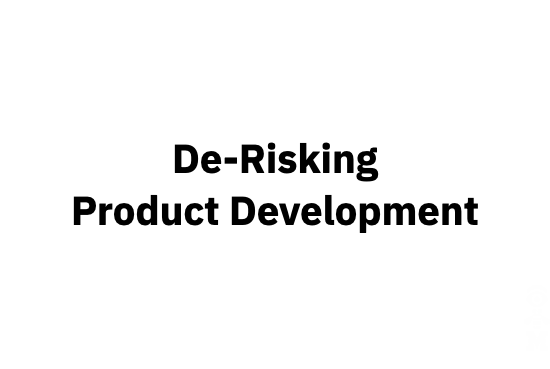De-Risking Product Development
About 90 percent of startups fail and even venture-backed ones still fail at between 60-70 percent. These percentages have been pretty consistent over the past ten years. The percentage of product failures in established companies is generally a well-kept secret, unless those failures were out in the open in public. However, they likely fail for the same reasons that startups do.
The number one reason for these product failures is what is typically referred to as product—market fit. Or, in other words, they were solving a problem that no humans had or not a sufficient number of them.
How does this happen, you may ask, and what can be done to increase the odds of being successful. In other words, how can we de-risk product development?
The Problem
A startup typically involves founders having an idea to solve a problem that they themselves have. Scratching their own itch is how its often described. They’re often developers so they just go ahead and start coding arguing that they can fail fast and pivot. That’s an incredibly risky and wasteful approach. Established companies often similarly develop products based on an idea from a leader themselves or that leader having had a conversation with an important or particularly persuasive client or perhaps based on a market analysis by an industry analyst.
The Solution
Science and medicine don’t do this. Only pseudo-science and pseudo-medicine create things out of the imagination of individuals and nothing else. Real science and real medicine are evidence-based and rely on research.
Startups and established companies are similarly using a pseudo approach when they should be evidence based to de-risk their investments. They similarly need research, and more specifically user experience research.
Interestingly the number three reason for startup failure is not having the right skills on the team. The solution is right under their noses, professionals trained in UX research. Those professionals have the skills to conduct generative research to understand the users in the market the product is intended to serve to determine whether the idea being considered is viable or better yet, what unmet needs the research uncovered that could be addressed with a new product idea. After that, research professionals could conduct evaluative research to provide feedback on the evolving product concept, design, and implementation. Lastly, they could do research on the optimal discover, learn, try, and buy experience. Out of interest, the second reason for startup failure is taking too long and running out of cash. But, doing product development the way I’m proposing can get a product to market twice as fast.
It makes way more sense to invest in getting UX researchers onto your team to de-risk your overall investment in product development than to not invest in UX research only to have wasted your entire investment in product development.
Of course, some companies and teams do this well but a surprising number don’t do it at all or if they do, they don’t do it on all products due to having insufficient numbers of UX researchers or not leveraging them or their work.

